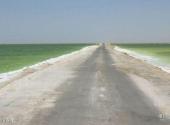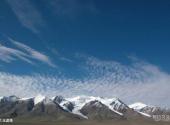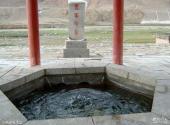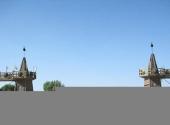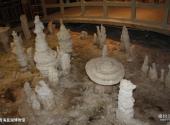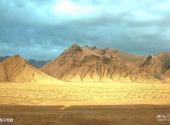
Scenic spot introduction:
The Golmud Kunlun Cultural Tourism Zone is one of the sections on the Qinghai-Tibet Railway's world's top tourist belt with the richest and most magnificent natural and cultural tourism landscapes, which is dominated by original ecological tourism resources. Relying on the profound cultural heritage of the Kunlun Mountains and the rich resources of the Qaidam Basin, the scenic spot has formed a western tourism center focusing on industrial tourism, root-seeking pilgrimage, mountaineering adventure, historical exploration, cultural tourism, etc.Golmud is backed by the Kunlun Mountains and is located in the Qaidam Basin, the "treasure basin" where millions of treasures gather; while the Kunlun Mountains rise from the Pamir Plateau, soaring down in the sky, spanning thousands of miles from east to west; the vast sky is covered with snow-capped peaks Towering, crisscrossed by glaciers, majestic and magical. Kunlun Mountain has a prominent position as the "ancestor of all mountains" in the cultural history of the Chinese nation. The ancients called Kunlun Mountain the "line of the dragon ancestors" of China. Throughout the ages, many sages and wise men, poets, poets, swordsmen, and wanderers from all over the world have looked to the west and sent their love to Kunlun, expressing their yearning and admiration for Kunlun with poems and songs. Li Bai's "If we hadn't met on the top of a jade mountain, we would have met under the moon on Yaotai" and Chairman Mao's "He was born out of the sky and conquered Kunlun", both have become representative works of chanting Kunlun. Nuwa's refining of stones to mend the sky, Jingwei's reclamation of the sea, the Queen Mother of the West's peach gathering, the White Snake stealing fairy grass, and Chang'e's flight to the moon also come from Kunlun. Kunlun Mountain is mentioned in many popular novels such as Chinese classics "Journey to the West", "The Romance of the Gods" and Jin Yong's "The Eight Parts of the Dragon".
From a distance, the high and low hills are dancing, like whales and dragons tumbling in the sea of sand; from a close look, they look like ancient castles, pyramids, animal shapes, and cylinders; when you are there, it feels like entering a maze . Such magnificent carvings and handicrafts are the miraculous work of nature during the long geological period of the Jin Kingdom, and are of high tourism and scientific research value.
Attractions distribution:
Golmud Kunlun Cultural Tourism Area is located in Qaidam Basin, Qinghai, and includes Kunlun Mountain, Salt Lake, Populus euphratica forest, ethnic customs park and other tourist attractions (spots) within the jurisdiction of Golmud City's 124,500 square kilometers. The Chaka Salt Lake and the Wanzhang Salt Bridge allow people to enter the dreamy world of salt; the Nachi Holy Spring is known as the "iceberg nectar", and there are still legends about Princess Wencheng and his entourage resting here when they went to Tibet; living in Qaidam During hundreds of years of living on the Qinghai Plateau, the Mongolians in the basin have gradually formed a Mongolian custom with Qinghai characteristics; the Yadan landform distributed in the northwest of the Qaidam Basin is rare in the world.Scenic spot qualifications:
National 4A-level scenic spotScenic spot features:
Photography, mountain climbing, sightseeing, adventure, historical tour, cultural tour, Qinghai-Tibet Railway, famous mountains, salt lakes, Populus euphratica forestScenic spot map:
Travel Notes of Travellers:
- Tiedan: Mission Operation 2010 (Part 1) ~ Travel Notes on the Qinghai-Tibet Line
travelling guideline:
Permanent tourism activities: Salt Lake City Tourism Culture and Art Festival is held in mid-to-late June every year. During the festival, a series of activities such as large-scale economic and trade negotiations, investment promotion, celebrity performances, tourism route promotion, salt flower and salt sculpture exhibition, and ethnic customs exhibition will be held.
Tour route:
Reference route: Qinghai Lake → Golmud → Kunlun Pass → Hoh Xil
Best time to visit:
You can see the salt lake in spring and summer, and the snow-capped mountains in autumn and winter; the Populus euphratica forest is most beautiful in November.
Shopping recommendations:
Specialties: Kunlun colored stones, Qinghai wolfberry, Kunlun Mountain mineral water, salt flowers, etc.
Food: roasted mutton, dry mix, and steamed buns.
Scenic spot map:
Scenic spot location:
China>Qinghai Province>Haihai Mongol and Tibetan Autonomous Prefecture>Golmud City
How to get there:
Bus: Tourists can generally take a plane or train to Xining and then to Golmud City. Transportation in Golmud mainly relies on taxis, which cost 10 yuan in the city.
Scenic area map:
Click to expand the scenic area map
Kunlun Mountain ticket price:
free
Scenic area opening hours:
All day


